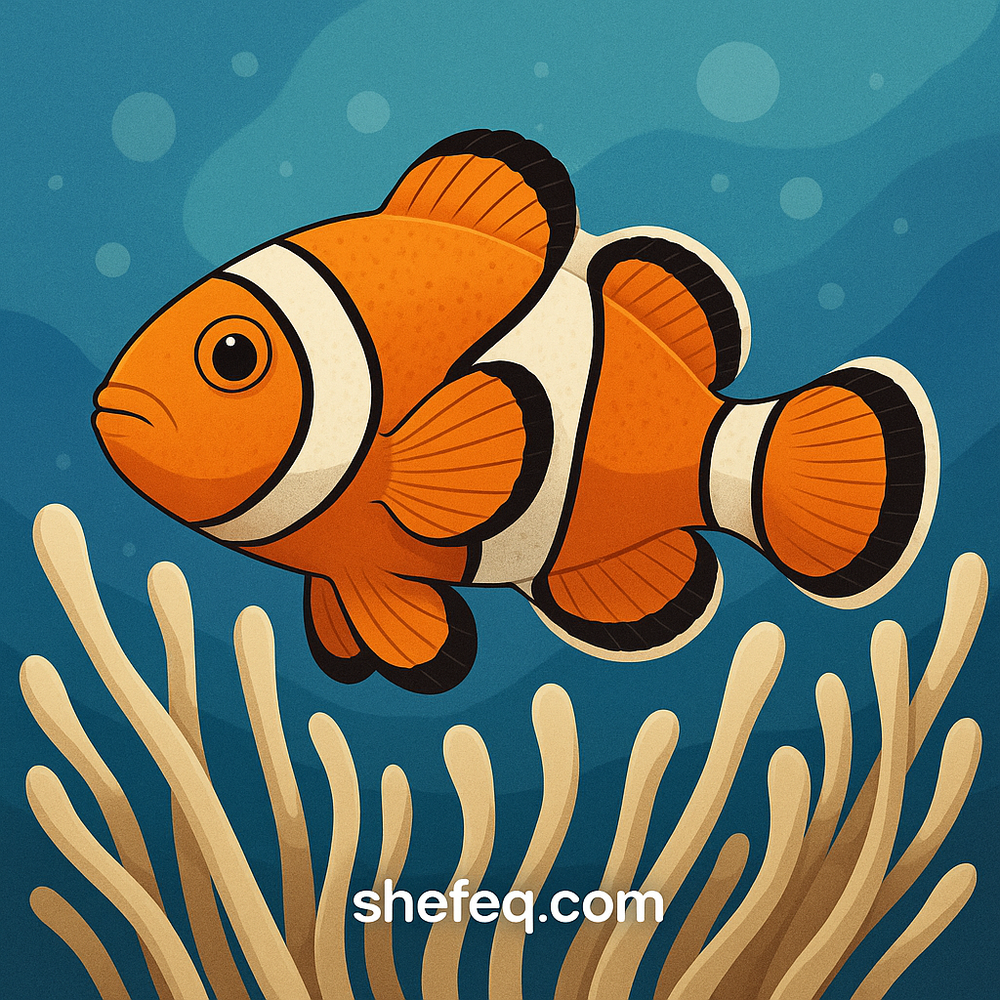Clownfish are tropical marine animals known for their vivid colors, interesting behavior, and unique relationship with sea anemones. Below you will find fascinating and useful information about these beautiful fish for both children and adults.
General Information
-
Alternative names: Clownfish are also known as anemonefish.
-
Number of species: There are 28–30 recognized species of clownfish worldwide.
-
Habitat: Found in the warm waters of the Indian and Pacific Oceans, including the Red Sea and Australia’s Great Barrier Reef.
Symbiotic Relationship — Clownfish and Sea Anemone
Clownfish have a symbiotic (long-term, mutually beneficial) relationship with sea anemones, which possess poisonous tentacles. This partnership benefits both:
Benefits of clownfish to the anemone:
-
Remove parasites and dead tissue.
-
Provide water circulation around the anemone by moving their fins.
-
Attract potential prey with their bright colors, increasing the anemone’s hunting success.
-
Share leftover food with the anemone.
Benefits of the anemone to clownfish:
-
Poisonous tentacles protect the fish from predators.
-
Provide shelter and protection.
Clownfish have a special mucus coating on their skin that protects them from the anemone’s venom.
Appearance and Size
-
Clownfish are usually yellow, orange, red, or black, with white or black stripes across their bodies.
-
The largest species can grow up to 18 cm (7.1 inches), and the smallest to around 10 cm (3.9 inches).
Life Cycle and Behavior
-
All clownfish are born male. When the dominant female in the group dies, the largest male changes into a female. This change is irreversible.
-
In the wild, they live for 6–8 years, and sometimes up to 10 years.
-
A female clownfish can lay about 1,000 eggs at a time. Eggs are usually placed on rocks or near the anemone, and the male guards them.
Economic and Cultural Importance
-
Clownfish account for more than 40% of the global marine ornamental fish trade. They are either bred in captivity or caught in the wild.
-
Their popularity increased significantly after the release of the famous 2003 animated film "Finding Nemo", in which the main character was a clownfish.

